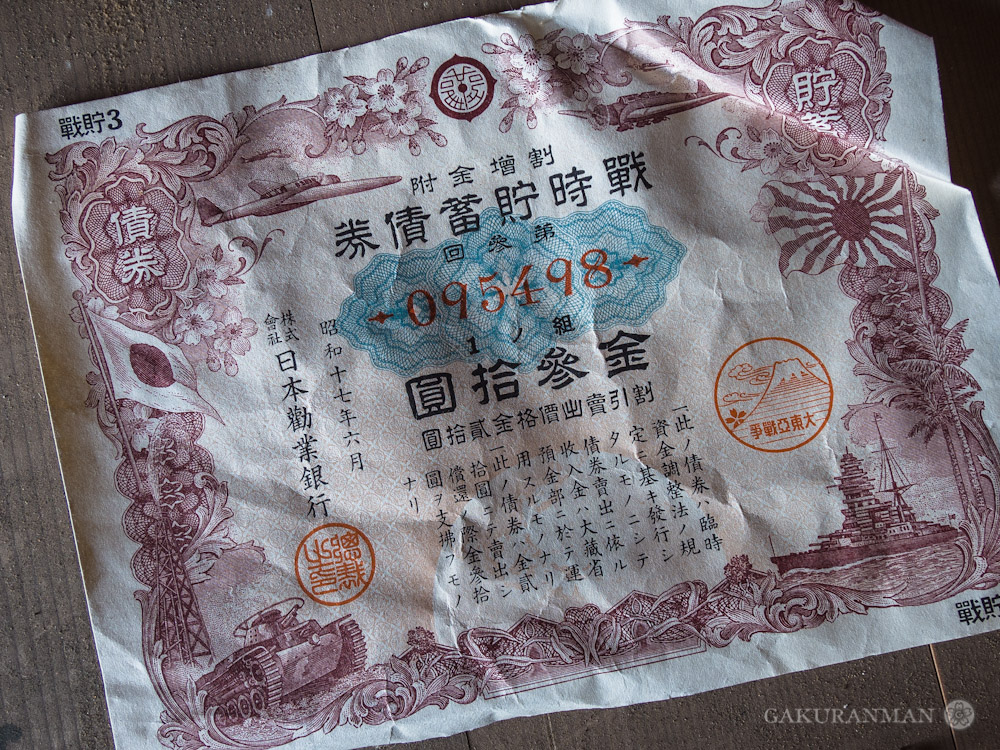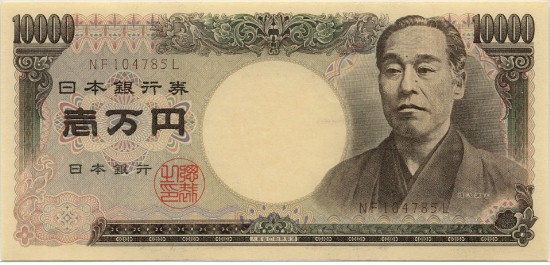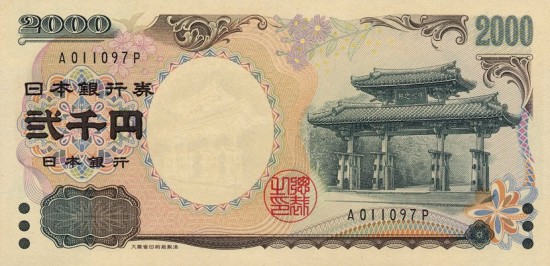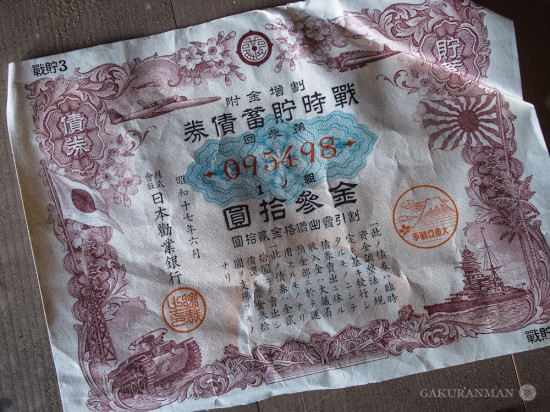Have you ever noticed the Kanji character used on the 10,000 yen Japanese banknote? If you’ve got your basic Japanese numerals down, you know that the character for 10,000 is 万 (まん) – a standard unit in the Japanese counting system. But what about the strange character in front of it? Why does the banknote read 壱万円? It all has to do with the use of formal numerals.
In addition to the basic set of Japanese numerals exists another set of Kanji numbers known as 大字 (だいじ) – literally the ‘big characters’. These formal characters are used in financial and legal documents, such as family registries and business accounts, to avoid problems arising from nefarious individuals adding an extra stroke or two to simple Japanese characters. 一 (いち), the number one, easily becomes 二 (に), 三 (さん) or even 十 (じゅう) – two, three or ten – with just an extra line or two! Clearly a big problem when your’re dealing with important monetary matters. As such, Daiji are deliberately made more complicated to write.
So, the Kanji 壱万円 as written on the 10,000 yen banknote is written using Daiji characters.
壱万円
いちまんえん
Ten-thousand yen
You may not have ever seen one before, but there also exists a 2,000 yen Japanese banknote. They are quite rare – usually only surfacing from foreign exchange bureaus – but you’ll notice that the note does not read 二千円 (にせんえん) like you’d expect.
It uses the Daiji character for two, as below.
弐千円
にせんえん
Two-thousand yen
Daiji – Formal Japanese Numerals
Below is a handy list you can refer to when confronting these difficult characters.
| Number | Reading | Regular Kanji | Current Daiji | Obsolete Daiji |
| 0 | れい、まる、ゼロ | 〇 | 〇 | 零 |
| 1 | いち | 一 | 壱 | 壹 |
| 2 | に | 二 | 弐 | 貮、貳 |
| 3 | さん | 三 | 参 | 參 |
| 4 | よん、し | 四 | 四 | 肆 |
| 5 | ご | 五 | 五、伍 | 伍 |
| 6 | ろく | 六 | 六 | 陸 |
| 7 | なな、しち | 七 | 七 | 柒、漆 |
| 8 | はち | 八 | 八 | 捌 |
| 9 | きゅう、く | 九 | 九 | 玖 |
| 10 | じゅう | 十 | 拾 | 拾 |
| 20 | にじゅう | 廿 | 弐拾 | 貳拾 |
| 100 | ひゃく | 百 | 百 | 陌、佰 |
| 1,000 | せん | 千 | 千 | 阡、仟 |
| 10,000 | まん | 万 | 万、萬 | 萬 |
You may also come across Daiji when examining old Japanese documents. In a recent haikyo exploration, I found an old Japanese war bond which used characters which are now considered obsolete, as well as providing a perfect example of older Japanese text written right to left.
See if you can use the table above to work out the wartime value of this bond!
Read more: Wikipedia




Leave a Reply